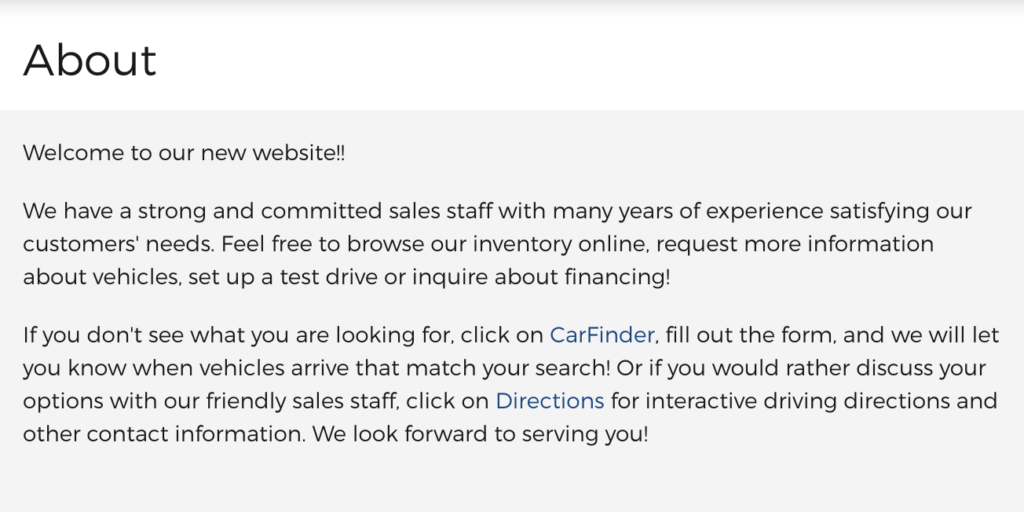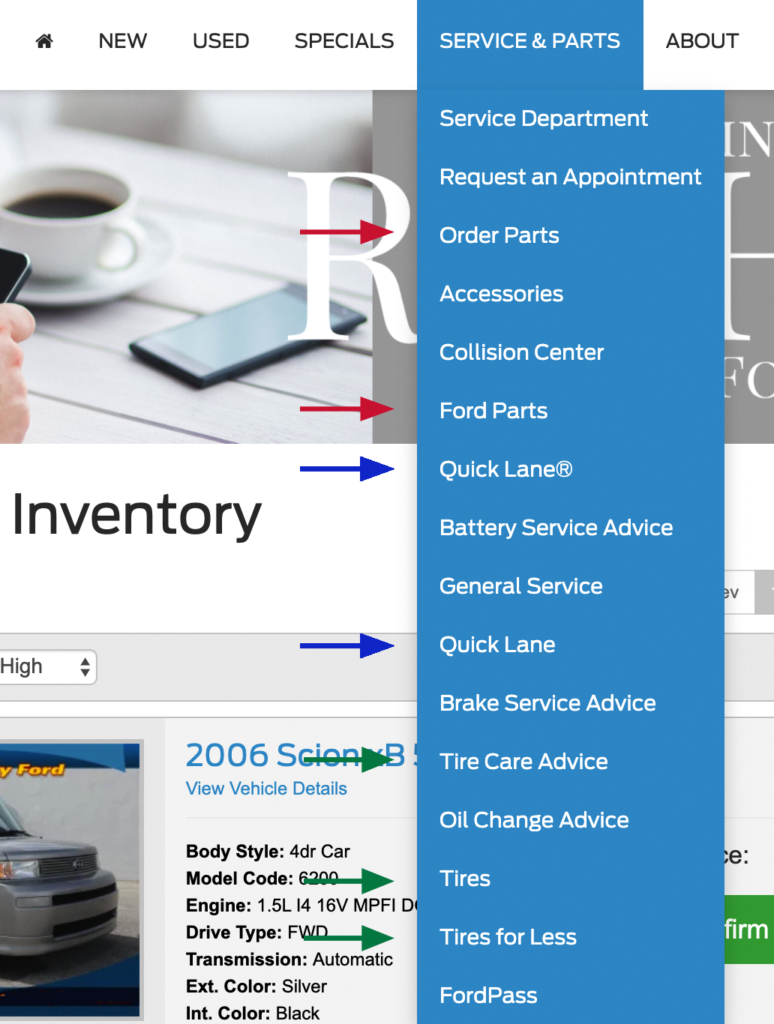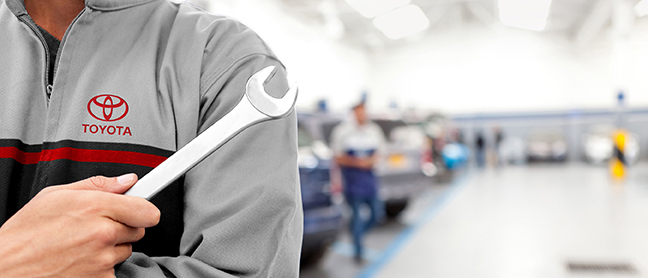
Why Your OEM Website Isn’t Getting Found Online (And How to Fix It)
I wish we had better things to say about automotive website providers.
Don’t get me wrong — they’re not all bad. It’s just that, as an automotive SEO agency, we have a few bones to pick.
Most web providers simply can’t — or don’t — offer the level of search engine optimization (SEO) your dealership needs.
Now more than ever, as people turn to their digital devices instead of physical stores, your website needs to be easy to find and use. And most likely, the “SEO package” that came with your web platform just won’t cut it.
This blog post is for you if you:
- Have recently changed automotive website providers.
- Are in the stages of finding a new one.
- Don’t really know what your current provider is doing for your SEO.
Stay tuned as we explain why the cookie-cutter website your OEM recommended needs work — and what you can do to fix it.
Why Automotive SEO Matters
Showing up on Google has never been more important for auto dealers (or any business).
Some areas of the country saw a spike of almost 50% in their web traffic during early days of the COVID-19 pandemic.It’s clear that people are spending more time on their digital devices. That means your opportunities to be found online have never been greater.
But just how do people find you?
With search engine optimization (SEO), of course!
Automotive SEO involves making changes to your website to make it friendlier to both users and search engines like Google or Bing. By improving your website, you’ll show up higher in search engine results — thus increasing your web traffic (and, thereby, your leads and sales).
These SEO improvements can be either technical or creative, and there are a lot of them you can make. Since Google doesn’t share all the factors in its ranking algorithm, SEO can be a tricky skill to master.
But there are several best practices recommended by SEO agencies like us.
And unfortunately, these best practices often aren’t practiced by automotive website providers.
Grade Your Website SEOWhy Most OEM Websites Need Work
Companies love to scale. It’s part of a profitable business model, right?
Automotive web providers think so, too. That’s why they’ve created scalable, cookie-cutter websites that can quickly be sold (and handed off) to tier-three dealerships like yours.
Because they’re templated, these websites are often filled with boilerplate text — AKA generic copy that simply replaces “[DEALERSHIP]” and “[CITY]” mentions with your own name and location.
“What’s wrong with that?” you might ask.
Well, while boilerplate text might benefit your website provider, it doesn’t benefit your users. No one wants to read the same “Visit our car dealership in [Cleveland] for [Cleveland] car service from our reliable [Cleveland] auto technicians” copy on every Cleveland automotive website they visit.
And Google doesn’t want to read it, either.
Search engines penalize duplicate content and reward original content. If Google finds your copy on another website, it will essentially dock valuable SEO points off your overall website score.
We’ve seen this firsthand. One website we researched (which was having trouble showing up in search results) turned out to have the same copy as literally 3,330 other websites. No wonder it wasn’t showing up!
Plus, high-quality landing pages can save you money on your Google Ads. Why? Because the user experience is better — and the better your UX, the higher you rank in search results.
Listen, we understand that your original equipment manufacturer (OEM) may allow you to pick from only one or two web providers from its list of approved vendors. That’s okay. In fact, aside from a few vendors that shall not be named, we don’t have beef with most automotive website providers themselves.
But we do have beef with providers that claim to offer “automotive SEO services” — and then don’t follow through with creating original, quality content on their clients’ sites.
You should get what you’re paying for, right?
3 Characteristics of a Good Automotive Website
So, you know what makes a bad automotive website (cookie-cutter content that doesn’t ultimately help the user).
Now, what makes a good automotive website?
Here are three of our must-have website features to help you boost your SEO metrics.
1. Secure Protocol
Google officially moved to secure website browsing in 2020.
What does that mean?
Basically, if your website isn’t “secure” (meaning it doesn’t protect web browsers’ privacy from attackers), Google will begin blocking your content from appearing in search results as these algorithm changes are rolled out over the next few months. Yeah . . . not good for non-secure websites!
Not sure if your website is secure?
Look for a little lock icon (🔒), as well as https:// instead of http://, to the left of your URL. If you don’t see those, learn how to take action to make your site secure.
2. Mobile-First Approach
The other big push by Google in recent years is its emphasis on mobile optimization.
You know mobile usage is rising, but did you know that 69% of shoppers will interact with only your mobile site?
Google knows that. That’s why it prioritizes mobile-friendly websites ahead of others in search results. In fact, a mobile-friendly website is no longer optional for SEO — it’s a prerequisite.
If the website recommended by your OEM doesn’t offer a good mobile experience, it’s time to find a new vendor.
Get Our Best Automotive SEO Tips in Our Free eBook! Download Now:
3. Positive User Experience
Speaking of good mobile experiences, let’s talk about user experience in general.
Your automotive website needs to do more than just exist. It needs to answer your customers’ questions, delight them with educational content, and inspire them to visit your dealership instead of the one down the road.
You can do this by creating awesome web content. If users enjoy their experience on your site, they’ll spend more time on it — which, in turn, improves your SEO.
5 Ways to Customize Your Cookie-Cutter Website for Better SEO
All right, now that you know the basics of automotive SEO, what can you actually do to improve your own?
Why, try these top five tips, of course.
1. Use Your Dealership’s “Voice“
What makes your dealership different?
Is your store led by women? Address a female audience throughout your content. Founded by a funny guy? Feature a humorous video of him on your home or about page.
However your dealership identifies with the community, find your own brand “voice,” and write straight from it.

This copy could be found on any dealership website . . . and in fact, it is. When we searched this text on Google, more than seven million results were returned.
2. Combine Duplicate Pages
Just because the website your OEM recommended came with five separate Quick Lane pages doesn’t mean you need them all.
In fact, each main keyword should have just one landing page; otherwise, Google (and your audience) will get confused. Nix the rest.

What’s with this mile-long drop-down? Each set of like-colored arrows could easily be combined to condense this list and improve SEO.
3. Update Page Titles & Meta Descriptions
Now that every page on your site is unique, every page title and meta description should be unique as well.
Don’t let your web provider get away with a title like “[DEALERSHIP NAME] [DEALERSHIP TYPE] [DEALERSHIP MAKE] Dealership in [DEALERSHIP CITY] [DEALERSHIP STATE] [DEALERSHIP ZIP CODE].” How on earth does that tell searchers what your page is actually about?

This is a typical automotive web provider’s “metadata editor” — AKA plug-and-play SEO.
4. Use Actual Photos from Your Dealership
Sure, it’s easy to slap on the same stock photo of the same headless technician on all your service pages. But as we’ve said before, shoppers prefer to see real photos of your dealership.
You don’t have to hire an expensive photographer or schedule a new shoot every time your staff changes, but do get at least a few quality snapshots of your store or service bay to help build trust with your audience.


Look familiar? These photos are found on two different websites for two different brands.
5. Check Your Website Copy
When was the last time you actually read the copy on your website?
We challenge you to take a few minutes and read through every single page on your site — yes, down to the description at the bottom of your home page. Does it repeat “Honda Parts” seven times in one paragraph? Does it keyword-stuff a neighboring city in the name of “conquesting”? Is it in any way outdated, typo-ridden, or — worst of all — cookie-cutter?
If so, you know what to do.

Hmm, which keyword do you think this dealership was trying to target?
Keep Learning, Keep Optimizing
Your dealership is unique. Your website should be, too.
Capitalize on the best, most exclusive aspects of your store by publishing original content on your site. Search engines — and, ultimately, your audience — will reward you for it.
What’s next for you in the world of automotive SEO? In our SEO for Auto Dealers eBook, you’ll learn everything you need to know about automotive SEO, including keyword research, pillar pages and the three main types of SEO.
If this is all sounding like a lot of work and you’d like some help, see how we help our partners with our search engine optimization services.
Show Up With SEO »




